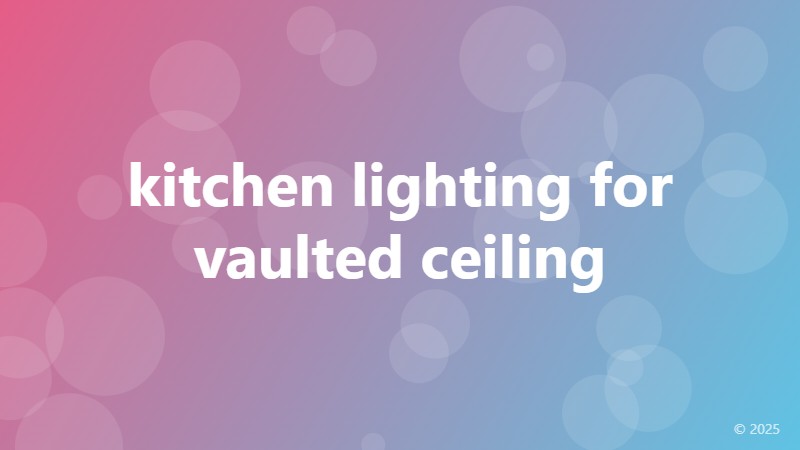kitchen lighting for vaulted ceiling

Understanding the Challenges of Kitchen Lighting for Vaulted Ceilings
Kitchen lighting is an essential aspect of any kitchen design, but it can be particularly challenging when it comes to vaulted ceilings. Vaulted ceilings can create a sense of openness and grandeur, but they can also make it difficult to achieve adequate lighting. This is because the ceiling's vertical height can create a cavernous effect, making it hard for light to reach the entire space.
Why Traditional Lighting Fixtures Don't Cut It
Traditional lighting fixtures, such as ceiling-mounted lights or pendant lights, may not be effective in a kitchen with a vaulted ceiling. These types of fixtures are designed to cast light downwards, but in a vaulted ceiling, the light can get lost in the vertical space. This can result in a kitchen that is poorly lit, with areas that are too bright and others that are too dim.
The Importance of Layered Lighting
To overcome the challenges of kitchen lighting for vaulted ceilings, it's essential to adopt a layered lighting approach. This involves using a combination of different light sources to create a balanced and visually appealing lighting scheme. The three main layers of lighting are ambient, task, and accent lighting.
Ambient lighting provides overall illumination for the space, while task lighting is focused on specific areas, such as countertops or islands. Accent lighting is used to highlight specific features or create visual interest. By combining these different layers of lighting, you can create a kitchen that is both functional and aesthetically pleasing.
Designing a Lighting Plan for a Vaulted Ceiling Kitchen
When designing a lighting plan for a kitchen with a vaulted ceiling, there are several factors to consider. First, it's essential to determine the type of lighting you need for each area of the kitchen. For example, you may need task lighting for the countertops, ambient lighting for the general space, and accent lighting for the island or peninsula.
Next, you'll need to select the right types of fixtures for each layer of lighting. For ambient lighting, consider using recessed lights or cove lighting, which can be installed in the ceiling to cast a soft, diffused glow. For task lighting, consider using under-cabinet lights or pendant lights that can be positioned to focus on specific areas.
Finally, don't forget to consider the type of bulbs you'll use. LED bulbs are a popular choice for kitchen lighting because they're energy-efficient and can provide a bright, white light that's ideal for task areas.
Conclusion
Kitchen lighting for vaulted ceilings requires careful planning and consideration. By adopting a layered lighting approach and selecting the right types of fixtures and bulbs, you can create a kitchen that is both functional and visually appealing. Remember to consider the unique challenges of a vaulted ceiling kitchen and design a lighting plan that takes these factors into account. With the right lighting, you can create a kitchen that is the heart of your home.